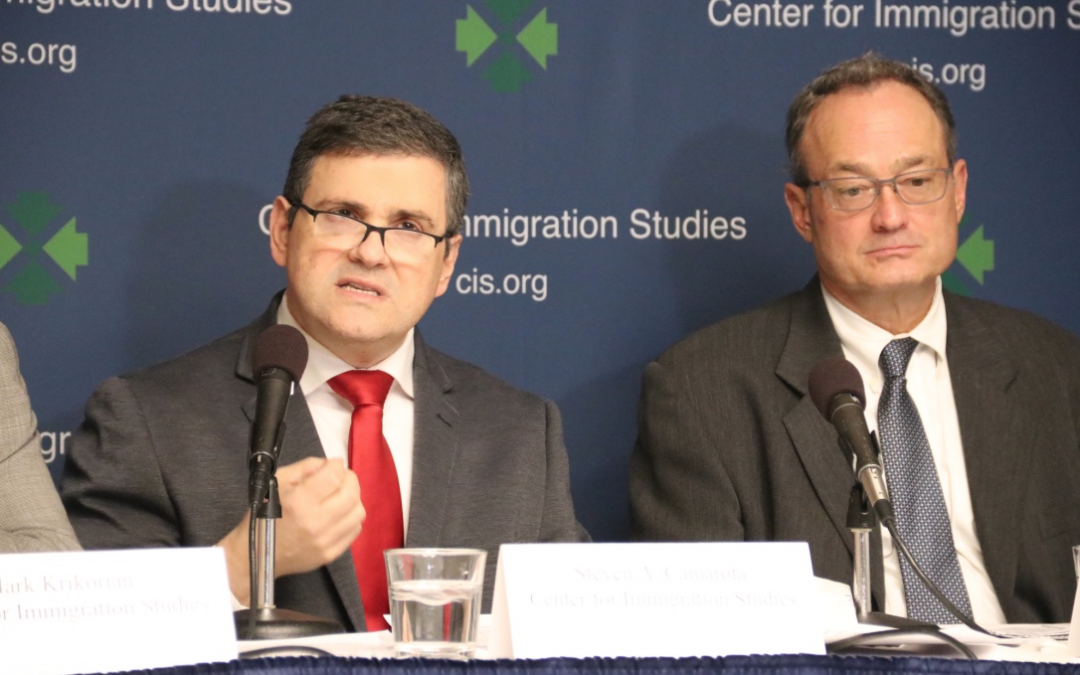WASHINGTON — The United States will soon have to grapple with its rapidly decreasing working-age population, but experts are torn about whether immigration is the cause or the remedy for the decline.
Steven Camarota, the director of research for for the anti-immigration group, Center for Immigration Studies, released a report on Thursday about the varying effects of immigration on the U.S. Census Bureau projections for the country’s population.
The United States, which has an immigrant population of roughly 44 million, will have double that number by 2060, according to Camarota. According to the U.S. Census Bureau, the number of immigrants increased by fewer than two percent since 2016.
The panelists at the CIS event attributed the steep drop in labor force to the waning participation of among native-born, high school-educated and unmarried men. The American Enterprise Institute’s Nicholas Eberstadt said the current labor force participation rate for these men is approximately 50 percent, which he called a “crisis.” For immigrant men under the same conditions, the labor force participation rate is over 90 percent.
In a Jan. 30 article for the American Consequences website, Eberstadt said that in the last 50 years, “the numbers of prime-age men neither working nor looking for work has grown almost four times faster than the number who are working or looking for work.” He partly attributed this progressive decline to the “growing incapability of grown men to function as breadwinners” and the massive influx of women in the workforce.
Pia Orrenius, a labor economist at the Federal Research Bank of Dallas, criticized CIS for focusing more on foreign-born “stock,” or the numerical size of immigrant populations, rather than immigrants’ potential for growth in the economy. “We focus on growth because we know that with growth in the labor force comes growth in investment, GDP and productivity.”
Orennius indicated that labor force participation rates between immigrants and native-born citizens depict the different connotations for how immigrants and Americans were raised and their access to services and education.
“To be a low-educated worker in the United States means something very different than being a low-educated immigrant,” Orrenius said. “If you come from Mexico with eight years of education, which is their national average, and you come here, then we call you a high school dropout.”
Orennius also cited a Pew Research Center study that immigrants will drive nearly all of the working-age population growth over the next two decades, contradicting Camarota’s claim that a future rise in the number of immigrants will have little to no impact.
Camarota also said that fertility rates among what he referred to as native-born Americans are a primary cause for the decline in the U.S. working-age population rate, according to Camarota. Eberstadt said the United States has, for many years, been the exception among the Organisation for Economic Co-operation and Development countries with consistently higher fertility rates.
While the U.S. Census Bureau reveals that immigrants are increasingly more educated in terms of high school and college degrees, Camarota said it was puzzling that the number of immigrants using welfare services remains the same.
“More skills should translate to better outcomes in the United States,” he added.
The Cato Institute’s Alex Nowrasteh said that immigrant use of welfare programs is actually below that of native-born Americans.
The panel also weighed the option of raising the retirement age by two years, which Eberstadt claimed would be the most effective solution to the country’s working-age population problems.
Nowrasteh said the government should raise the retirement age for Social Security and Medicare as high as they can possibly go because the best way to affect the government’s fiscal state of the is to change taxes and spending rules.
“If you raise those higher and have higher immigration then you get the best of both worlds, so why not do both?” Nowrasteh said.
Orrenius concurred with Eberstadt and Nowrasteh on raising the retirement age and called on the government to do more about raising the employment rate of the working population.


